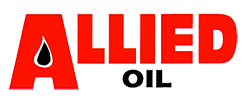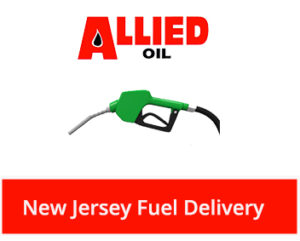Allied Oil is using this space to help make our customers aware of the important October 2018 deadlines set by NJ DEP & US EPA related to UST operations. It seems there are still many UST operators who do not know all the in’s & out’s about their obligations. And while we operate no UST’s, and claim no special expertise in these matters, we recognize the importance of getting the word out on these deadlines. It is our hope that none of our customers have to be surprised & suddenly find themselves non-compliant & quite possibly unable to use their tanks. And while there are many, many components to these regulations that all UST operators must become familiar with, we are currently highlighting 2 key matters that we think may require operators to start preparing today to ensure compliance by the October 2018 deadline-
-UST Operator training
-Initial testing of spill buckets, overfill prevention equipment and containment
sumps used for piping interstitial monitoring
Under the 3-6-18 posting we discussed UST operator training. We continue to urge everyone planning to train their own A & B operators to act quickly & sign up for the limited number of training classes scheduled.
April 12, 2019—
The EPA regulations regarding UST’s define a series of tests & procedures that must conducted no later that Oct 13, 2018. These include conducting the first testing of spill buckets, overfill prevention equipment and containment sumps used for piping interstitial monitoring. Thereafter regular testing is required every 3 years.
There are only so many qualified/licensed tank testing/installation professionals in our state and quite a few UST’s that will need to get tested over the next 6 months. Book your testing early…
SOME KEY INFORMATIONAL LINKS:
NJ DEP
Containment Sump Testing- a low-level hydrostatic test procedure. This guidance and testing form may be used to comply with the three-year integrity test rules for piping sumps or under dispenser containment where interstitial monitoring of piping is performed.
http://www.nj.gov/dep/enforcement/docs/nj-low-level-sump-test.pdf
EPA
Musts for USTs -an EPA summary document that is helpful and spells out all the current requirements. NJ DEP UST rule has the same requirements for testing.
https://www.epa.gov/ust/musts-usts
NJ DEP
UST Training
http://www.nj.gov/dep/enforcement/ust.html
NJ DEP
Compliance & Enforcement Links
http://www.nj.gov/dep/enforcement/ust-resources.html
EPA
Underground Storage Tank (UST) Technical Compendium about the 2015 UST Regulations
https://www.epa.gov/ust/underground-storage-tank-ust-technical-compendium-about-2015-ust-regulations#secondarycontainment
Key excerpts from NJ DEP UST rule that talks about containment testing and spill and overfill.
7:14B-5.11 Integrity testing of containment devices where interstitial monitoring of piping is performed
(a) The owner and operator performing interstitial monitoring of UST system piping shall prevent releases to the environment by ensuring the integrity of each containment device as follows:
- Each containment device shall be tested at least once every three years, or within 30 days of discontinuing monitoring described in (a)2 below, to ensure the equipment is liquid tight by using a vacuum, pressure, or liquid testing method, in accordance with one of the following:
- Requirements developed by the manufacturer, if any;
- A code of practice developed by a nationally recognized association or independent testing laboratory, such as Petroleum Equipment Institute Recommended Practice RP1200, “Recommended Practices for the Testing and Verification of Spill, Overfill, Leak Detection, and Secondary Containment Equipment at UST Facilities” (available at www.pei.org); or
iii. A method that the owner and operator demonstrates is no less protective of human health and the environment than the requirements at (a)1i and ii above.
7:14B-5.10 Spill and overfill prevention equipment
(a) The owner and operator of an UST system with spill and overfill prevention equipment shall ensure that the equipment meets the following requirements:
- Spill prevention (such as a catchment basin, spill bucket, or other spill containment device) equipment shall prevent releases to the environment by either:
- Being constructed with two walls and the space between the walls interstitially monitored to ensure that the integrity of the walls is maintained. Interstitial monitoring shall be performed not less often than the walkthrough inspections required pursuant to N.J.A.C. 7:14B-5.12(a)1i. Within 30 days after discontinuing interstitial monitoring, the owner and operator shall begin meeting the testing requirements of (a)1ii below; or
- Being tested at installation and at least once every three years by using vacuum, pressure, or liquid testing to ensure that the spill prevention equipment is liquid tight, in accordance with one of the following:
(1) Requirements developed by the manufacturer, if any;
(2) A code of practice developed by a nationally recognized association or independent testing laboratory, such as Petroleum Equipment Institute Recommended Practice RP1200, “Recommended Practices for the Testing and Verification of Spill, Overfill, Leak Detection, and Secondary Containment Equipment at UST facilities” (available at www.pei.org); or
(3) A method that the owner and operator demonstrate is no less protective of human health and the environment than the requirements of (a)1ii(1) and (2) above.
- Spill prevention equipment shall be visually inspected and cleaned of liquid and debris prior to any introduction of hazardous substances into the tank.
- Overfill prevention equipment shall be inspected at installation and at least once every three years. At a minimum, the inspection shall ensure that overfill prevention equipment satisfies the requirements of N.J.A.C. 7:14B-4.1(a)3ii through v, as applicable. Inspections shall be conducted in accordance with:
- Requirements developed by the manufacturer, if any;
- A code of practice developed by a nationally recognized association or independent testing laboratory, such as Petroleum Equipment Institute Recommended Practice RP1200, “Recommended Practices for the Testing and Verification of Spill, Overfill, Leak Detection, and Secondary Containment Equipment at UST facilities” (available at www.pei.org); or
iii. A method that the owner and operator demonstrate is no less protective of human health and the environment than the requirements of (a)3i and ii above.
Click here for OPERATOR UPDATES – https://www.alliedoilco.com/new-jersey-ust-testing-update-april-2018
[maxbutton id=”2″ ] [maxbutton id=”4″ ] [maxbutton id=”3″ ]

